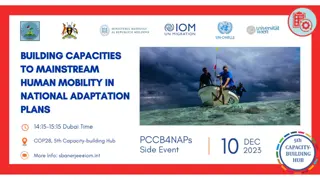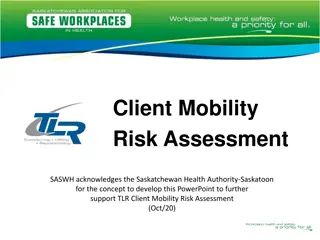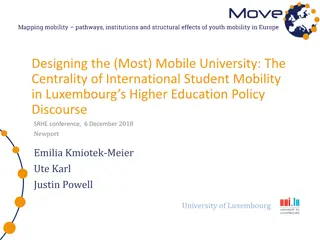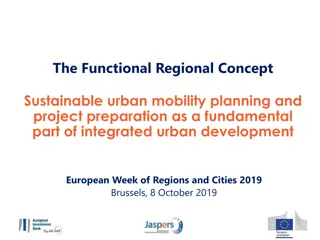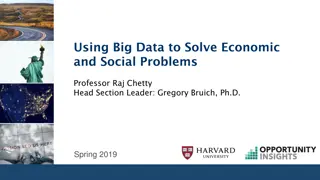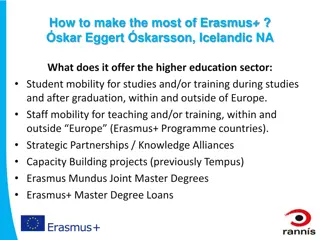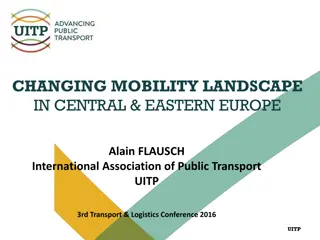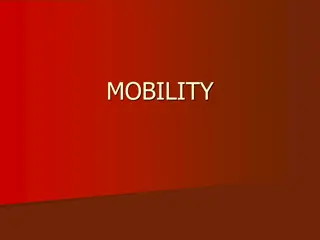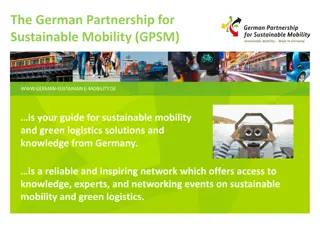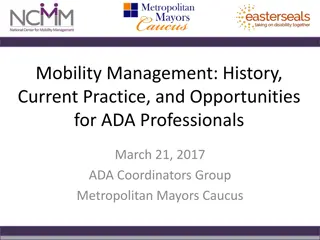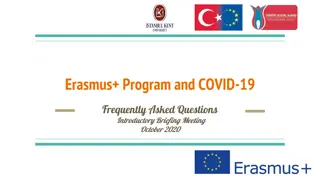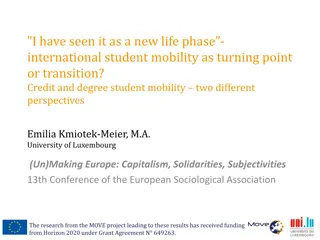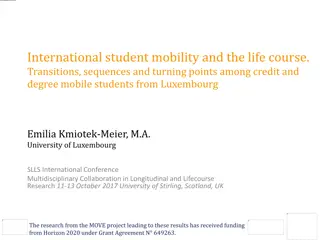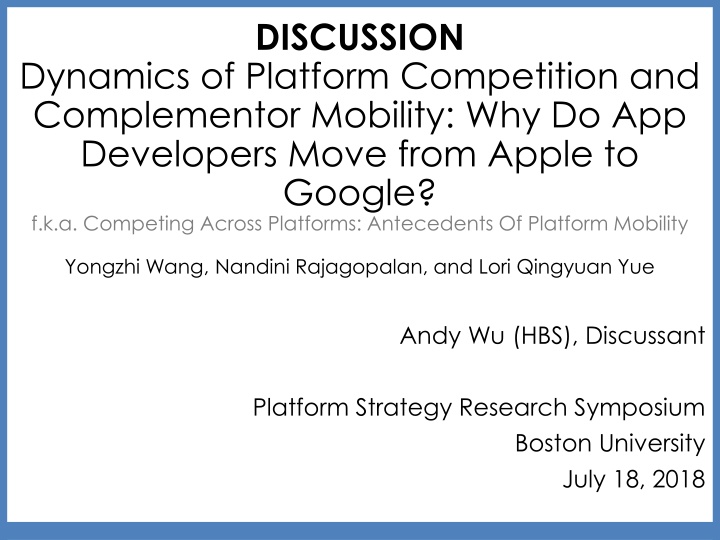
App Developer Mobility Between Apple and Google Platforms
Explore the dynamics of app developers shifting from Apple to Google platforms based on quality vs. quantity strategies, complementor choices, and competitive positioning. Insights from a platform competition symposium at Harvard University.
Download Presentation

Please find below an Image/Link to download the presentation.
The content on the website is provided AS IS for your information and personal use only. It may not be sold, licensed, or shared on other websites without obtaining consent from the author. If you encounter any issues during the download, it is possible that the publisher has removed the file from their server.
You are allowed to download the files provided on this website for personal or commercial use, subject to the condition that they are used lawfully. All files are the property of their respective owners.
The content on the website is provided AS IS for your information and personal use only. It may not be sold, licensed, or shared on other websites without obtaining consent from the author.
E N D
Presentation Transcript
DISCUSSION Dynamics of Platform Competition and Complementor Mobility: Why Do App Developers Move from Apple to Google? f.k.a. Competing Across Platforms: Antecedents Of Platform Mobility Yongzhi Wang, Nandini Rajagopalan, and Lori Qingyuan Yue Andy Wu (HBS), Discussant Platform Strategy Research Symposium Boston University July 18, 2018
Summary Quality-based vs. quantity-based platform governance strategy for incumbents vs. entrants Theory Phenomenon Empirics Complementor (app developers) choice of competing platforms, as revealed by their movement iOS vs. Android in 2008 2014, focusing on period of Android entry against iOS incumbency July 2018 Andy Wu (Harvard) 2
Quality vs. Quantity: Productivity Frontier High Competitive Positioning Choosing a unique point on the frontier. Differentiation Operational Effectiveness Achieving best practice. Low High Low Relative Cost Position July 2018 Andy Wu (Harvard) 3
Google/Android is fundamentally a (search) advertising business. Google 2015 Annual Report. Graphics by http://www.bbc.co.uk/guides/z9x6bk7 July 2018 Andy Wu (Harvard) 4
Apple is fundamentally an iPhone business. Estimated gross profit in FY2014. https://www.statista.com/chart/1994/apples-gross-profit-by-product/ July 2018 Andy Wu (Harvard) 5
Overall Trends in Applications and Developers by Platform Source: App Figures. https://blog.appfigures.com/app-stores-growth- accelerates-in-2014/ July 2018 Andy Wu (Harvard) 6
Theoretical Strengths General question of interest to strategy scholars Platform competition (e.g., Zhu and Iansiti, 2012) Industry evaluation (e.g., Abrahamson and Rosenkopf, 1993) Clear theoretical motivation and baseline mechanisms July 2018 Andy Wu (Harvard) 7
Theoretical Opportunities Perspective. Smooth out transition between perspective of the complementor and perspective of platform owner E.g., when building out hypotheses, the arguments need to be from the perspective of the complementor Dimensions of quality. Distinguish carefully between vertical differentiation vs. horizontal differentiation. Clarify language, particularly when contextualizing theory in the setting Rational vs. behavioral arguments. Are behavioral arguments necessary to motivate complementor migration patterns? E.g. anxiety Judo economics. Price umbrella concept may apply to entrant strategy July 2018 Andy Wu (Harvard) 8
Theoretical Opportunities Specificity of differentiation. Opportunity to delve into transaction-specific vs. generic differentiation E.g., as iOS apps tend overtime to adopt Android and become saturated with Android, the remaining apps on only iOS are those most tailored specifically for the iOS customer base (as revealed by top-ranked developers moving less to Android, and paid apps moving less to Android when Android is dominant) July 2018 Andy Wu (Harvard) 9
Generic Competitive Strategies Competitive Advantage Lower Cost Differentiation Cost Broad Differentiation Leadership Competitive Scope Differentiation Focus Narrow Cost Focus (Porter, 1980) July 2018 Andy Wu (Harvard) 10
Theoretical Opportunities Switching vs. multi-homing costs. Both are relevant when analyzing dynamics of competition between platform incumbents and entrants. Predictive value skews from multi-homing costs for new market vs. switching costs in established markets Mono-homing: 1 Setup Cost + 1 Ongoing Cost Multi-homing: 2 Setup Costs + 2 Ongoing Cost (may be smaller than 2x mono-home) Switching: 2 Setup Costs + 1 Termination Cost + 1 Ongoing Cost (Eisenmann, 2007) July 2018 Andy Wu (Harvard) 11
Empirical Strengths Huge matching process across platforms, resulting in massive dataset Excellent job working within constraints of data Effect sizes Extensive battery of robustness checks Media coverage Surpassing events Competition on Android Time confounding effect Multi-homing costs changing over time Complementor capabilities July 2018 Andy Wu (Harvard) 13
Empirical Opportunities Omitted variables bias. Anything correlated with both Android-iOS market share gap (benefit-cost to end customer of adopting platform) and complementor transition event from Android to iOS (benefit cost of developer adopting platform), e.g., general quality of hardware Ideally would have instrument for Android-iOS market share gap meeting exclusion restriction: something that affects consumer adoption but not developer adoption except through consumer adoption 1st Stage: Installed Base Gapt= 0+ 1Random_Eventt+ t 2nd Stage: Platform_Mobilityi,t= + Installed Base Gapt+ X + ui+ i,t where i: developers, t: time (month), ui: developer fixed- effects, t and i,t are usual error terms Random_Eventt= 1, t > when a random event happens 0, otherwise X is a vector of developers characteristics (time-varying). , July 2018 Andy Wu (Harvard) 14
Empirical Opportunities Measurement error: free vs. in-app payment. Data limitation, but ideally would have proxy dummy to separate these and strengthen results. One way is to have dummies for apps that are platforms themselves (e.g., social media, dating apps) July 2018 Andy Wu (Harvard) 15
Empirical Opportunities Interaction term vs. inverted U. As in robustness check, proxy average platform profitability (for a complementor) and including interaction term with market share Switching vs. multi-homing. Separate out multi- homing events (complementor adopts one platform, while staying on original platform) from switching events (complementor adopt one platform, abandons apps on other platform) July 2018 Andy Wu (Harvard) 16
Appendix: Minor Details Footnote superscript number should go after commas and periods,5 not before X-axis of Android-iOS installed-base gap in smartphone shipment in graphs should be rounded to nearest 10th (i.e., 0.01, 0.02, etc.) Rescale variable 11 (i.e., Avg. Size of the Developer s ) by dividing by 1000 or 100,000 Split summary table and correlation table into two tables or turn the big table horizontal Variables 8 13 should have more concise variable labels In tables, show base independent variable before corresponding interaction term(s), e.g., Top-ranked & Portfolio s % of Paid Apps on iOS July 2018 Andy Wu (Harvard) 17
Appendix: Minor Details Difference-in-difference should be Difference-in- differences Table 2: (2)(3) The sample includes Table 2: , and (b) iOS stayers. Table 3, 4, and 6: Some of the notes should end with period (.) instead of comma (,) Table 5: Remove hyphen between installed-base and gap Table 7: Remove extra period after in parentheses. July 2018 Andy Wu (Harvard) 18
Thank you! awu@hbs.edu @andywuandywu Disclaimer: Andy Wu is a Android user and developer. July 2018 Andy Wu (Harvard) 19



